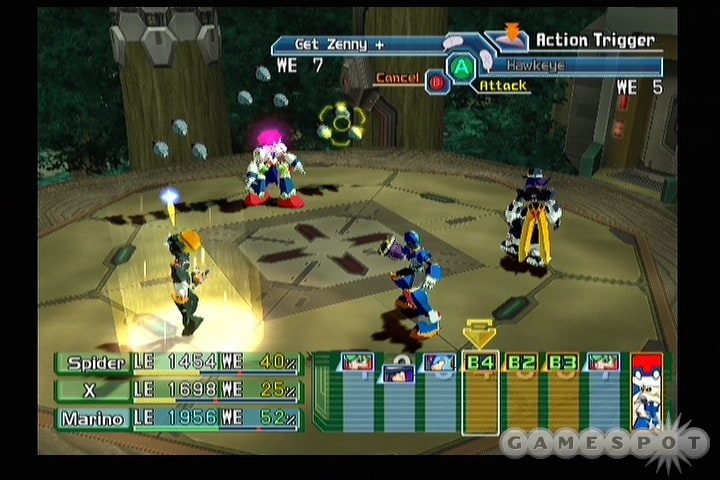Mega Man X: Command Mission - Part 1
I’ve
finished yet another RPG, so its time to take a break from the kid’s
stuff and review a game from yet another franchise I am intimately
familiar with.
I am just
going to come out and say it: Mega Man is the reason I play video
games. Mega Man 3 is was the single game that made me beg my parents
for an NES back in the 90s. To this day, its still one
of my favorite gaming franchises and one of the few I pay attention to
in the modern generation. For a brief period, Mega Man games were the
only non-RPGs I actively played.

That
phase didn’t last all that long, but RPGs did become the genre I
primarily focused on. I was back to playing a bigger variety by 2004,
but when I heard they were making a Mega Man RPG, I was pumped.
It wasn’t often I got excited by new games at that point, but this
certainly made me take notice. I had also learned to temper my
expectations for games, so while I appreciated the effort I also kind of
anticipated I would come away a little disappointed.
I think
tempering my expectations beforehand really went a long way in me
enjoying this game. There are a lot of very, very glaring flaws in
Command Mission. Most of these flaws come in areas that are
critical for RPGs, like story, character development, and
presentation. While Mega Man had never appeared in a game like this,
Capcom had certainly published RPGs before so I fail to see why more
care wasn’t taken to make sure these things were up
to snuff. There were also a lot of gameplay elements that are almost
universally off-putting to RPG fans, including unnecessary stealth and
obstructed vision sections.
That
being said, this game fits a certain rarely targeted demographic:
beginning RPG gamers. Remember in the Quest 64 review where I talked
about a lack of entry level RPGs? I went back and started
thinking about what titles would fit the criteria, which in my mind
are:
- The game is actually fun
- Combat/menus are simple, yet allow for high level of strategy
- More hand-holding and tutorials than standard RPGs
- Hand-Holding/Tutorials are of good quality
- Little or no level grinding
- Tight difficulty curve
- Familiar gaming elements are mixed in with RPG concepts
Want to
know how many I came up with off the top of my head? Two. Super Mario
RPG and Pokémon. That’s it. After this most recent play through, I can
safely say I would add Command Missions to that
category. It hits on all of those categories, for better or for
worse. (For the record, Quest fails on numbers 3, 4 and 6.). Many of
the aspects that I found insufferable would actually allow non-RPG
players to feel more at home, as would the familiar settings
and characters. Combat is great, tutorials are detailed and the
difficulty curve is appropriate.
Check back next week as I delve into the details of this flawed, yet very interesting RPG.
Comments
Post a Comment